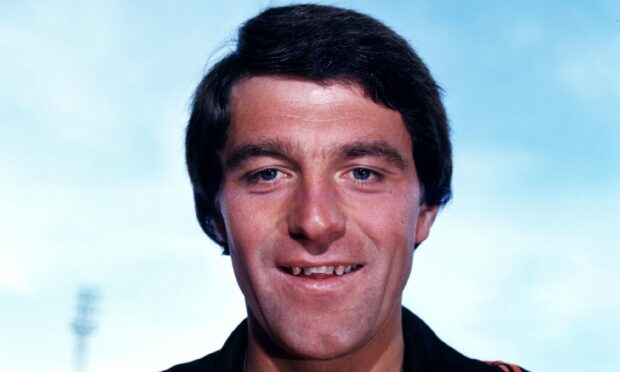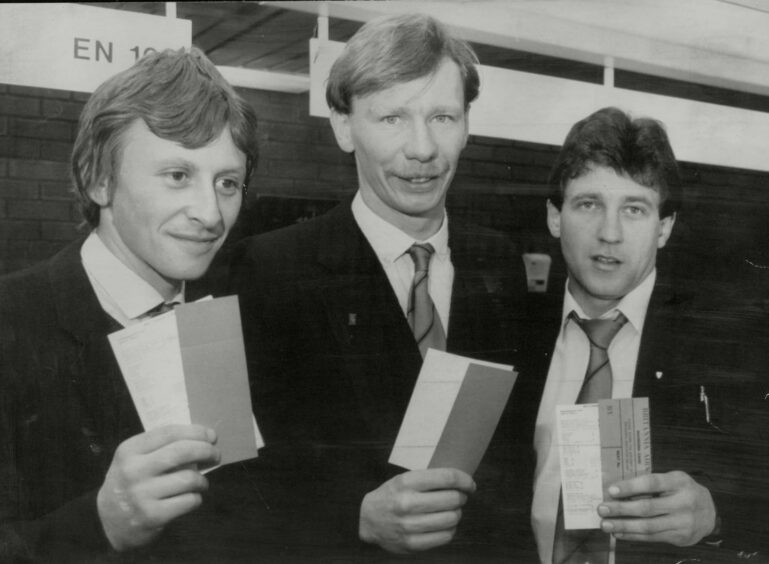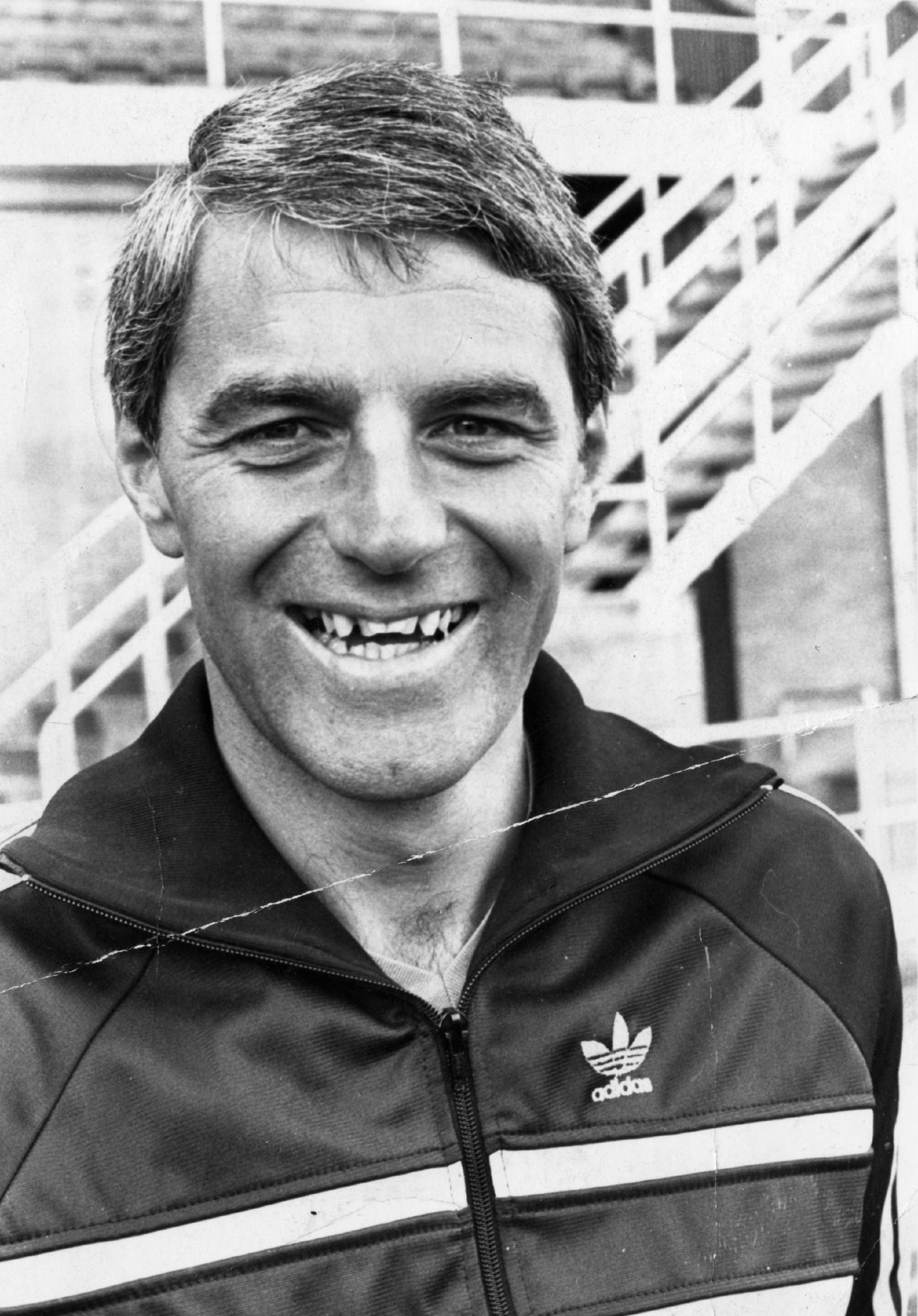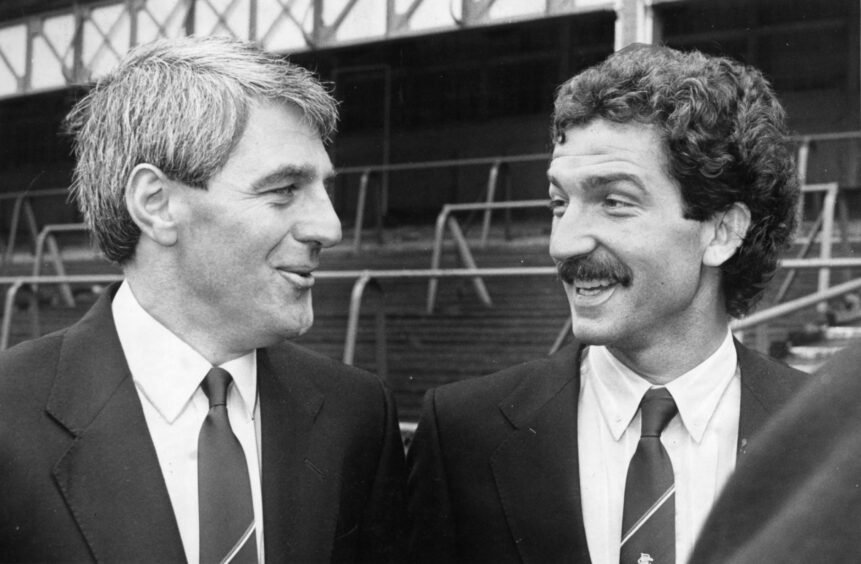Paul Sturrock played for Dundee United under Jim McLean and won 20 Scotland caps under Jock Stein and Alex Ferguson.
Here were three managerial masters among the most decorated in history.
Yet Sturrock rated Walter Smith as having had the biggest influence on his life and career.
Smith, who recently died aged 73, started his coaching career under McLean in 1977 and was his right-hand man when United won the Premier Division in 1983.
Smith was credited with developing Sturrock, Dave Narey, Davie Dodds, Ralph Milne and Graeme Payne into the players who helped United win the title.
“I rate myself very fortunate to have played under wee Jim during my entire career at Tannadice, plus big Jock and Sir Alex for Scotland,” said Sturrock.
“They are three of the greatest managers ever, and I’m grateful for everything I learned from them.
“Yet I have absolutely no doubt Walter Smith has had the biggest influence of anyone on my career and life.
“Wattie was like a big brother to me when I made my United debut at 16.
“He took me under his wing.
“Although he was only 25 at that time, you could tell even then he was destined to become a coach and manager.
They definitely moulded me into a far better player than I would ever have been.”
Paul Sturrock
“When Jim McLean decided I had to change my style of play to make it to the top, he left Walter and Gordon Wallace to take me for individual coaching every afternoon.
“Jim knew I had to change from being a through-the-middle runner to succeed.
“So Wattie and ‘Stubby’ taught me how to take the ball to my feet and take on defenders down the flanks.
“They also forced me to work non-stop on my weaker left foot.
“Gordon had been a quality striker as a player but Wattie was always a defender or defensive midfielder.
“Yet he knew the game so well even then, it came naturally for him to coach strikers, too.
“They definitely moulded me into a far better player than I would ever have been.”
Boot room
Sturrock also learned the man-management side of the game from Smith that helped keep him in the game after his playing days ended in 1989.
Woe betide any of the kids who fell foul of him.
“We called Wattie ‘The Bear’ when he was in charge of the kids at Tannadice because of his size and also his ability to use his physique to put the fear of death into us,” he said.
“If he was displeased about anything, his style was to invite you into the boot room, put out the lights then say: ‘Let’s have a go’.
“He soon got his point across!
“We also used to play head tennis in the old gym at Tannadice.
“Wattie and his playing partner, Archie Knox, were virtually unbeatable.
“They were so good they hardly had to run – although we all knew it was better not to beat them, anyway, if we wanted home for our tea!
“He really did run the show for my generation at Tannadice.
“Looking back, he should have been given the chance to become United manager.”
Rangers departure
Sturrock didn’t realise the job Smith did until he left to join Graeme Souness at Ibrox in 1986.
When Souness left to join Liverpool in 1991, Smith replaced him as manager and went on to lift 21 major trophies over two periods in charge.
Rangers emulated Old Firm rivals Celtic in winning nine titles in a row and were just one game away from reaching the Champions League final in 1993.
He also led Rangers to the Uefa Cup Final in 2008, losing 2-0 to Zenit St Petersburg.
“Walter was the one who got me interested in coaching at an early age,” said Sturrock.
“I had my qualifications by my mid-20s, so by the time I stopped playing I was ready to stay on in the game as a coach myself.”
Known affectionately as Luggy, the Pitlochry-raised forward was a one-club man, making more than 500 appearances in tangerine from 1974-89 and netting 171 goals – the second-highest tally in club history.
He was hugely influential in United’s rise as a European force, playing a key role in the League Cup triumphs of 1979 and 1980 and the Premier League win in 1983.
Sturrock tormented Barcelona in home and away wins in 1987’s Uefa Cup, while his international career took him to two World Cups.
After managing both St Johnstone and United, Sturrock moved to England in 2000, earning plaudits for his work at Plymouth, Sheffield Wednesday, Swindon and Southend, and sampling life in the Premier League with Southampton.
More like this:
When Walter Smith lost the plot after Jim McLean turned down Rangers
Derek Johnstone: 1970 League Cup Final was the stuff of dreams













